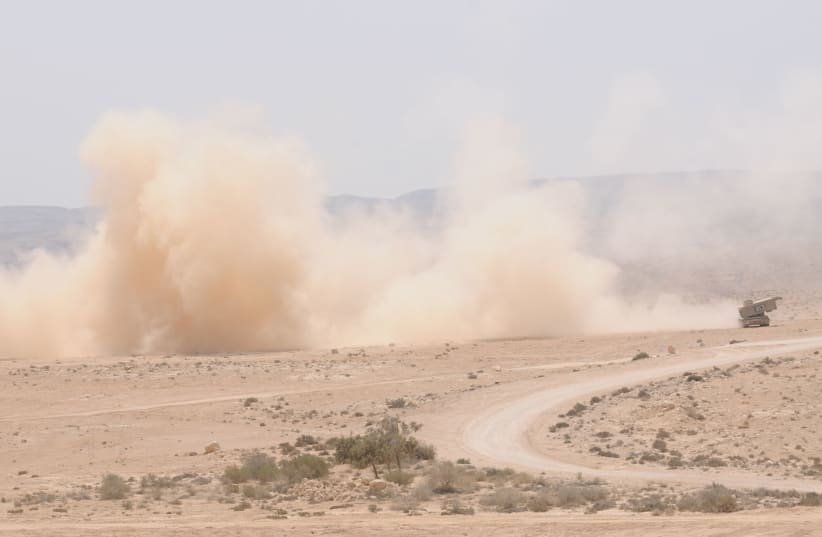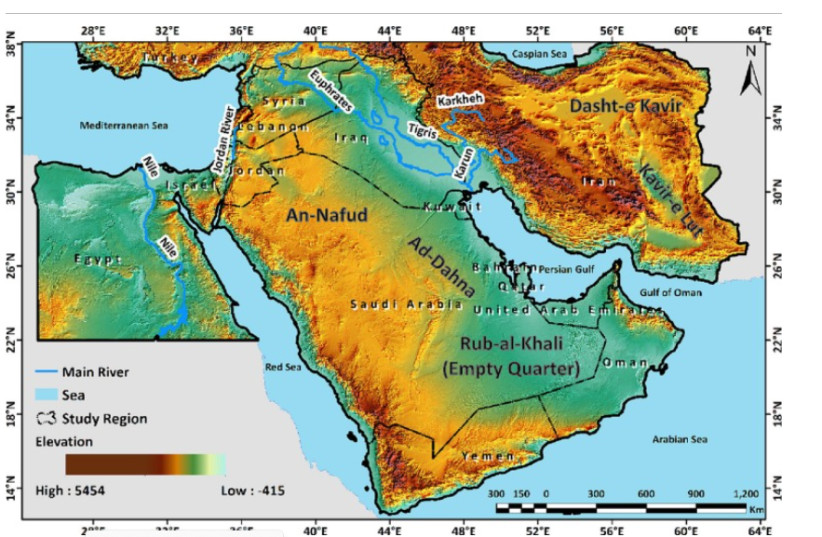Israelis and others living in the Middle East must have noticed increased dust storms in recent years.
Scientists in Sweden report that climate change is transforming dust storms—a natural phenomenon in the eastern Mediterranean—into a more frequent and widespread threat to health and economies throughout the region.
Dust levels have increased in many parts of the Middle East, chiefly due to global warming. Still, other human activities also share credit, said Prof. Zahra Kalantari, an expert in environmental and engineering geosciences for sustainability at the KTH Royal Institute of Technology. She blamed factors such as oil extraction, military conflicts, and a lack of cross-border coordination of water management.
The peer-reviewed study, published in the journal Science of the Total Environment under the title “Dust and climate interactions in the Middle East: Spatio-temporal analysis of aerosol optical depth and climatic variables,” maps the spread of aerosolized dust and pinpoints where and when trends in precipitation and evaporation have changed course for the worse – and Israel is in the middle of it.
After analyzing multiple sets of data over the last four decades, the researchers found an increase in dust levels in Saudi Arabia, Iraq, Yemen, parts of Iran and Egypt, and countries around the Persian Gulf, while they have declined in northern Iran and southwest Turkey.
The area between the Tigris and Euphrates rivers in northern Iraq and along the Syria-Iraq border was reported to have the highest concentration of dust sources in the region, reflecting a sharp increase over the last 20 years.
What about Israel?
While not explicitly mentioning Israel in the published study, even though it is shown on the illustrative map (with the “West Bank” marked alongside Israel), she noted that frontal dust storms are more likely to occur in Jordan, its surrounding areas, and the northern Arabian Peninsula.
The researchers documented a notable decrease in precipitation in northern Iraq, Syria, southwestern Iran, and southern Turkey. Factors such as deforestation, military conflict, dam building, over-irrigation, and water extraction have intensified the natural effects of the area's arid and hot climate. Kalantari said one serious result is the reduction of soil moisture and vegetation coverage, which generally help reduce dust levels.
She said the environmental consequences include soil erosion, biodiversity loss, and desertification. Economic losses may result from damaged infrastructure, disrupted agriculture, and reduced tourism. She added that social disruption also can be expected, and vulnerable populations will suffer disproportionately.
Kalantari declared that regional cooperation, uncommon in the Middle East, is vital to address complex factors and implement effective dust control measures. Comprehensive strategies are imperative to mitigate adverse health, ecology, and socio-economic development effects.
The researchers call for “a comprehensive strategy focusing on environmental management and policy reforms.” Prescriptive measures include reforestation, soil conservation, water conservation, regional cooperation, sustainable urban planning, advanced monitoring systems, public awareness campaigns, and climate adaptation measures.
She concluded, “These efforts, combined with research and cross-border collaboration, are essential for a sustainable environment that is resilient to dust storms in the region.”
The Environment and Climate Change portal is produced in cooperation with the Goldman Sonnenfeldt School of Sustainability and Climate Change at Ben-Gurion University of the Negev. The Jerusalem Post maintains all editorial decisions related to the content.

